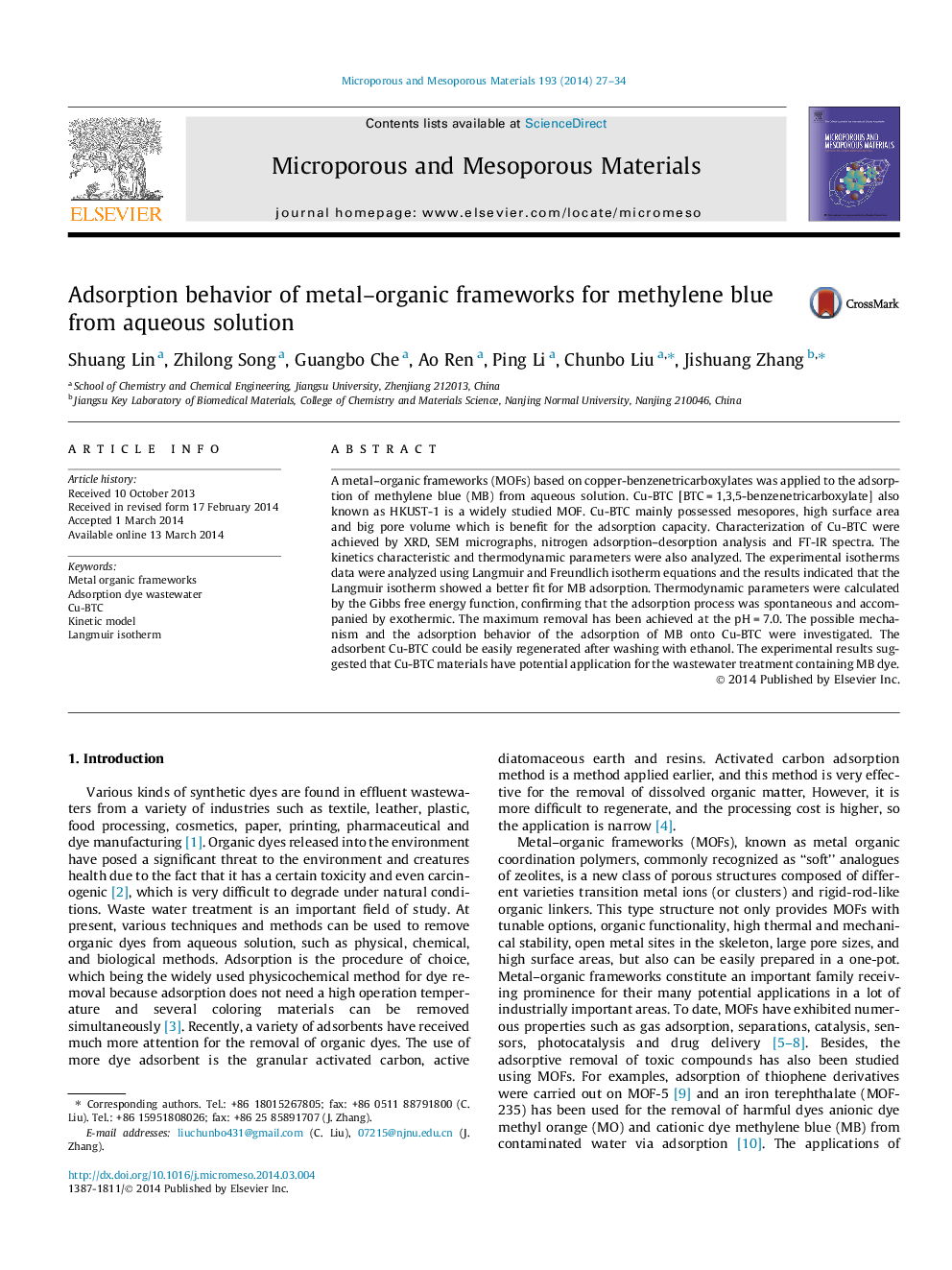| Article ID | Journal | Published Year | Pages | File Type |
|---|---|---|---|---|
| 73035 | Microporous and Mesoporous Materials | 2014 | 8 Pages |
•The metal–organic framework Cu-BTC was applied to the adsorption of methylene blue.•The kinetics characteristic and thermodynamic parameters were analyzed.•The Cu-BTC displayed excellent MB adsorption capacity.•The adsorbent Cu-BTC could be easily regenerated after washing with ethanol.
A metal–organic frameworks (MOFs) based on copper-benzenetricarboxylates was applied to the adsorption of methylene blue (MB) from aqueous solution. Cu-BTC [BTC = 1,3,5-benzenetricarboxylate] also known as HKUST-1 is a widely studied MOF. Cu-BTC mainly possessed mesopores, high surface area and big pore volume which is benefit for the adsorption capacity. Characterization of Cu-BTC were achieved by XRD, SEM micrographs, nitrogen adsorption–desorption analysis and FT-IR spectra. The kinetics characteristic and thermodynamic parameters were also analyzed. The experimental isotherms data were analyzed using Langmuir and Freundlich isotherm equations and the results indicated that the Langmuir isotherm showed a better fit for MB adsorption. Thermodynamic parameters were calculated by the Gibbs free energy function, confirming that the adsorption process was spontaneous and accompanied by exothermic. The maximum removal has been achieved at the pH = 7.0. The possible mechanism and the adsorption behavior of the adsorption of MB onto Cu-BTC were investigated. The adsorbent Cu-BTC could be easily regenerated after washing with ethanol. The experimental results suggested that Cu-BTC materials have potential application for the wastewater treatment containing MB dye.
Graphical abstractFigure optionsDownload full-size imageDownload as PowerPoint slide
